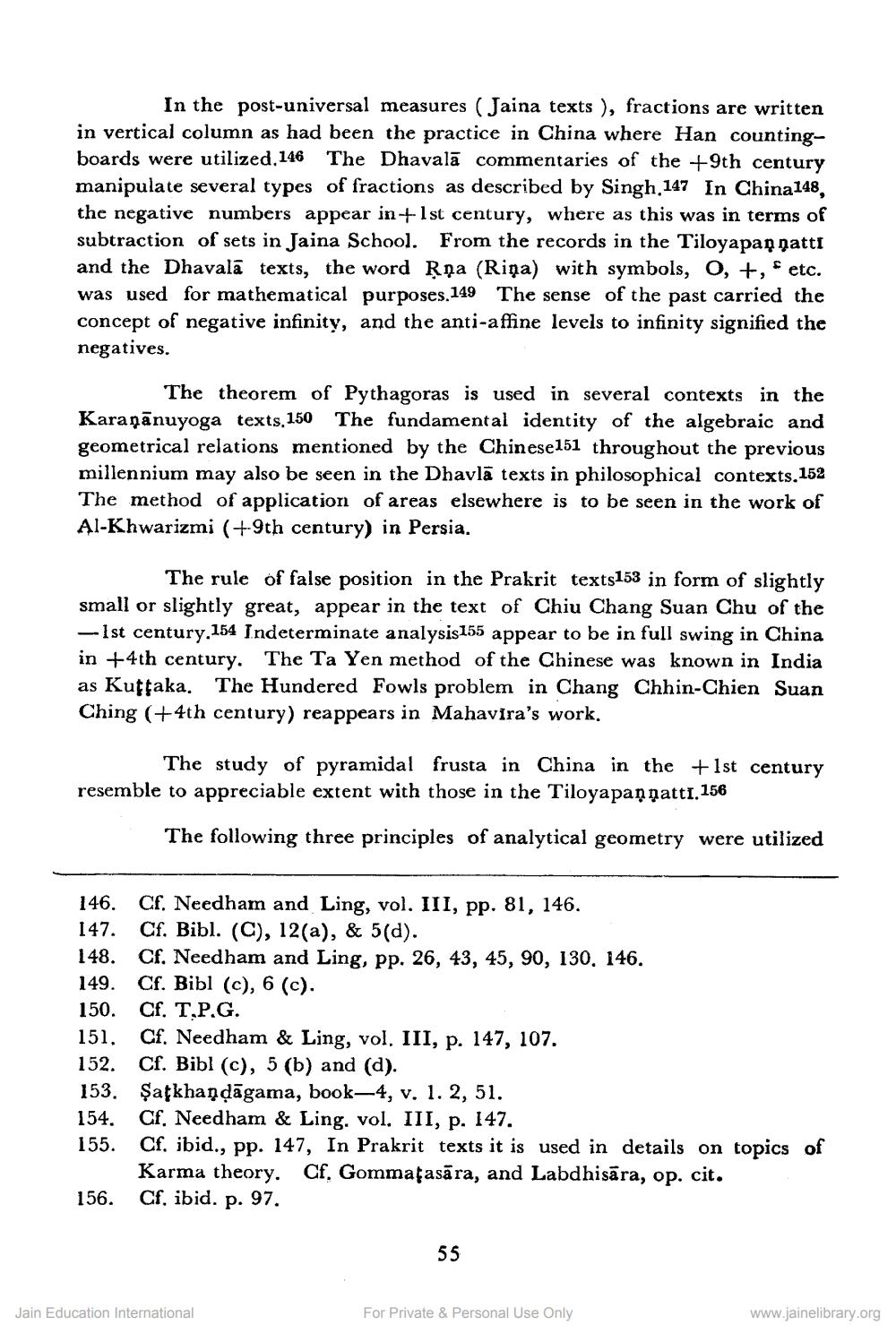________________
In the post-universal measures (Jaina texts ), fractions are written in vertical column as had been the practice in China where Han countingboards were utilized. 146 The Dhavalā commentaries of the +9th century manipulate several types of fractions as described by Singh,147 In China 148, the negative numbers appear in+1st century, where as this was in terms of subtraction of sets in Jaina School. From the records in the Tiloyapan natti and the Dhavalā texts, the word Rņa (Riņa) with symbols, 0, +, etc. was used for mathematical purposes. 149 The sense of the past carried the concept of negative infinity, and the anti-affine levels to infinity signified the negatives.
The theorem of Pythagoras is used in several contexts in the Karaṇānuyoga texts.150 The fundamental identity of the algebraic and geometrical relations mentioned by the Chinese 151 throughout the previous millennium may also be seen in the Dhavlā texts in philosophical contexts. 152 The method of application of areas elsewhere is to be seen in the work of Al-Khwarizmi (+9th century) in Persia.
The rule of false position in the Prakrit texts153 in form of slightly small or slightly great, appear in the text of Chiu Chang Suan Chu of the - 1st century.154 Indeterminate analysis155 appear to be in full swing in China in +4th century. The Ta Yen method of the Chinese was known in India as Kuttaka. The Hundered Fowls problem in Chang Chhin-Chien Suan Ching (+4th century) reappears in Mahavira's work.
The study of pyramidal frusta in China in the + 1st century resemble to appreciable extent with those in the Tiloyapaņņatti.156
The following three principles of analytical geometry were utilized
146. Cf. Needham and Ling, vol. III, pp. 81, 146. 147. Cf. Bibl. (C), 12(a), & 5(d). 148. Cf. Needham and Ling, pp. 26, 43, 45, 90, 130, 146. 149. Cf. Bibl (c), 6 (c). 150. Cf. T.P.G. 151. Cf. Needham & Ling, vol. III, p. 147, 107. 152. Cf. Bibl (c), 5 (b) and (d). 153. Şafkhandāgama, book—4, v. 1. 2, 51. 154. Cf. Needham & Ling. vol. III, p. 147. 155. Cf, ibid., pp. 147, In Prakrit texts it is used in details on topics of
Karma theory. Cf. Gommafasāra, and Labdhisāra, op. cit. 156. Cf, ibid. p. 97.
55
Jain Education International
For Private & Personal Use Only
www.jainelibrary.org




